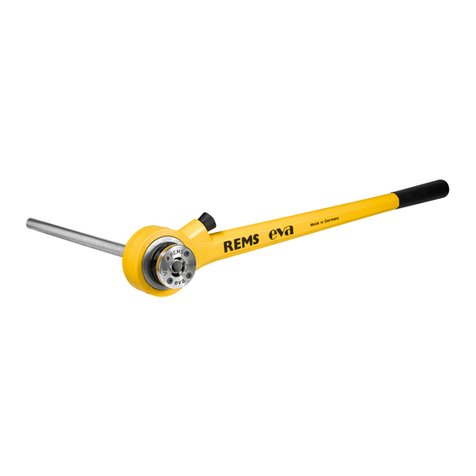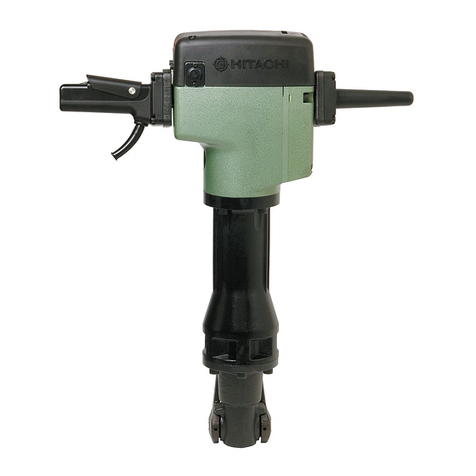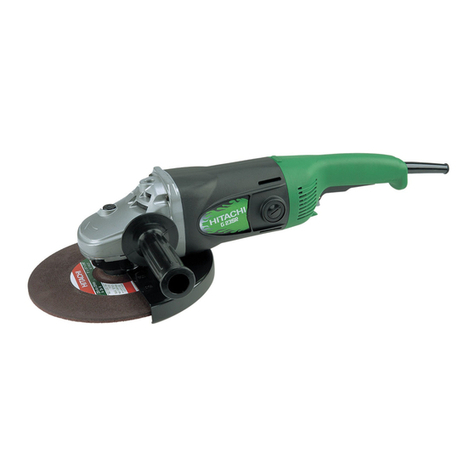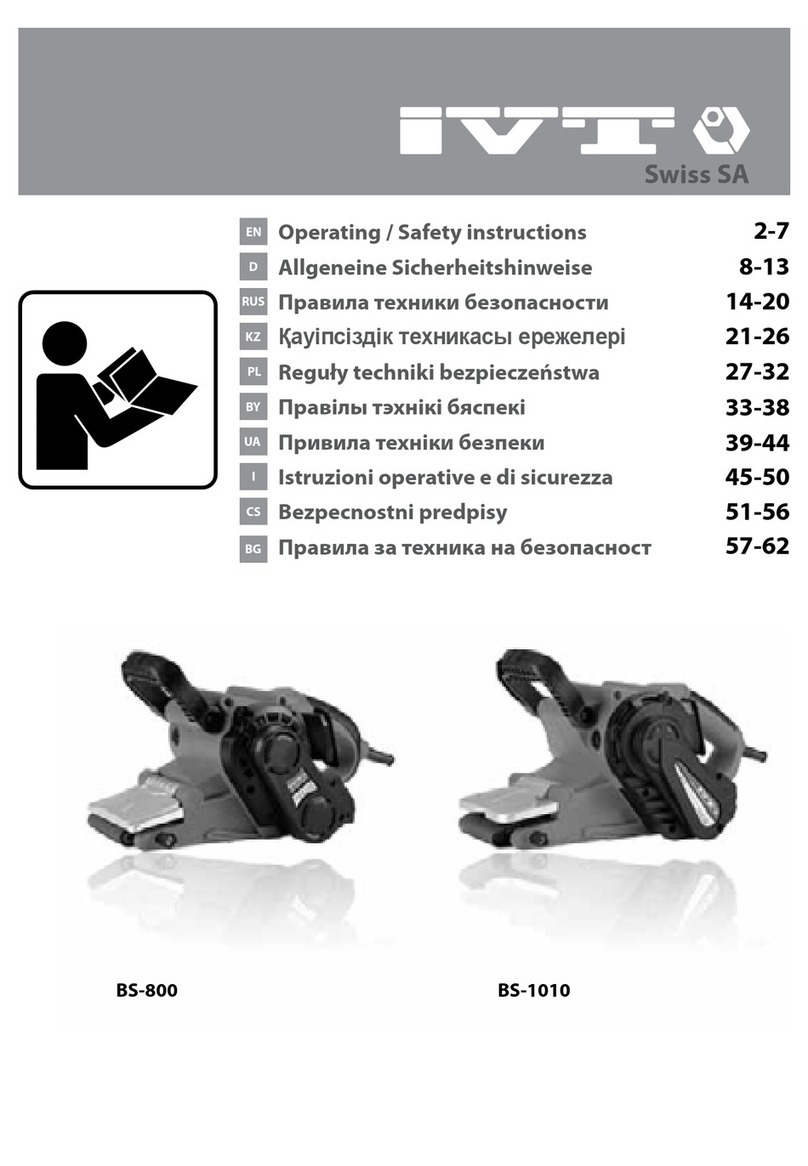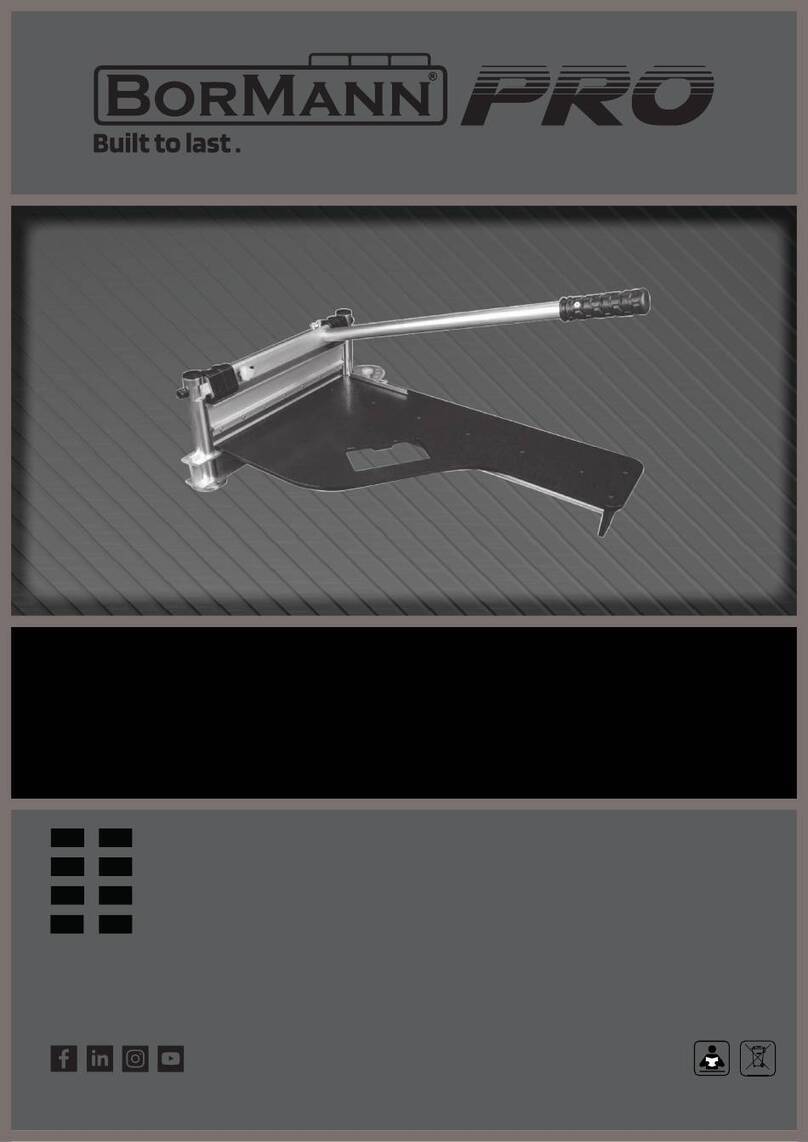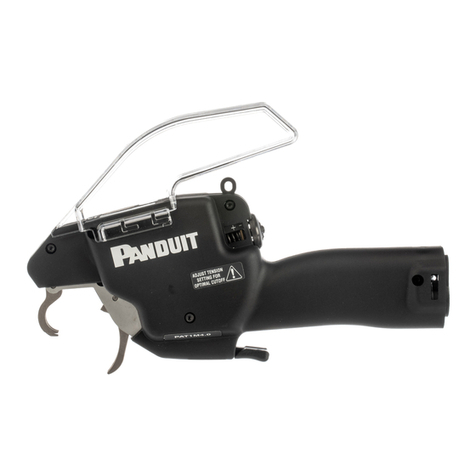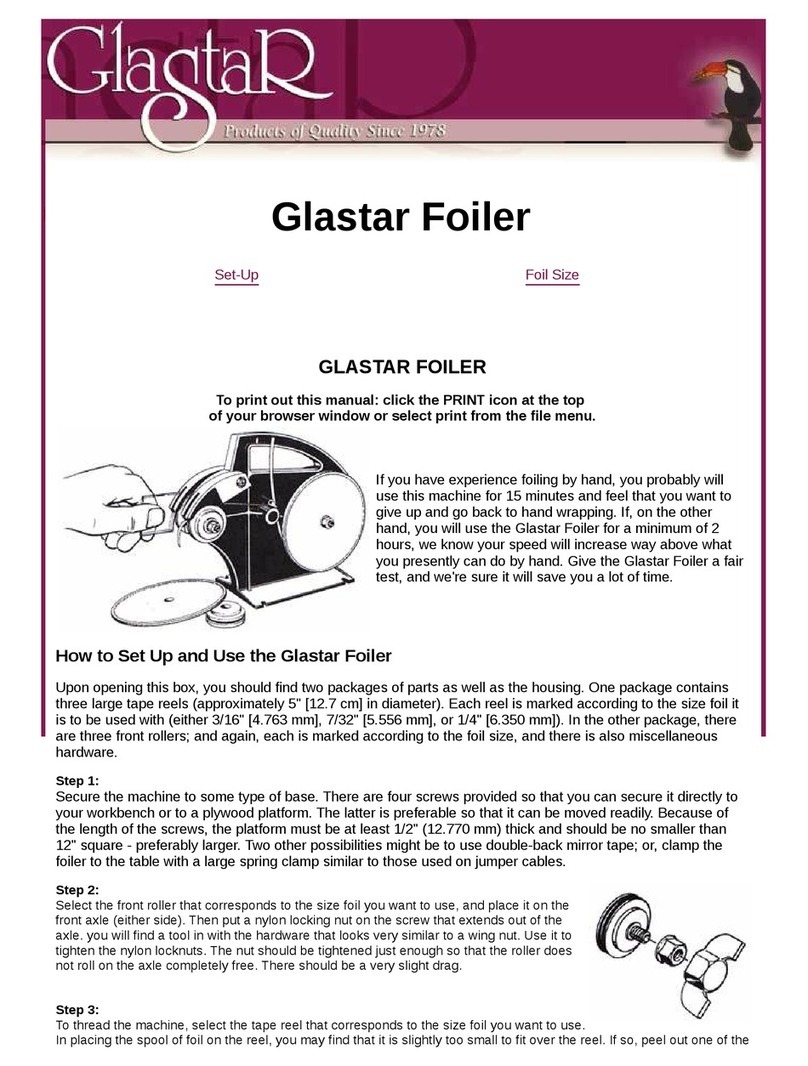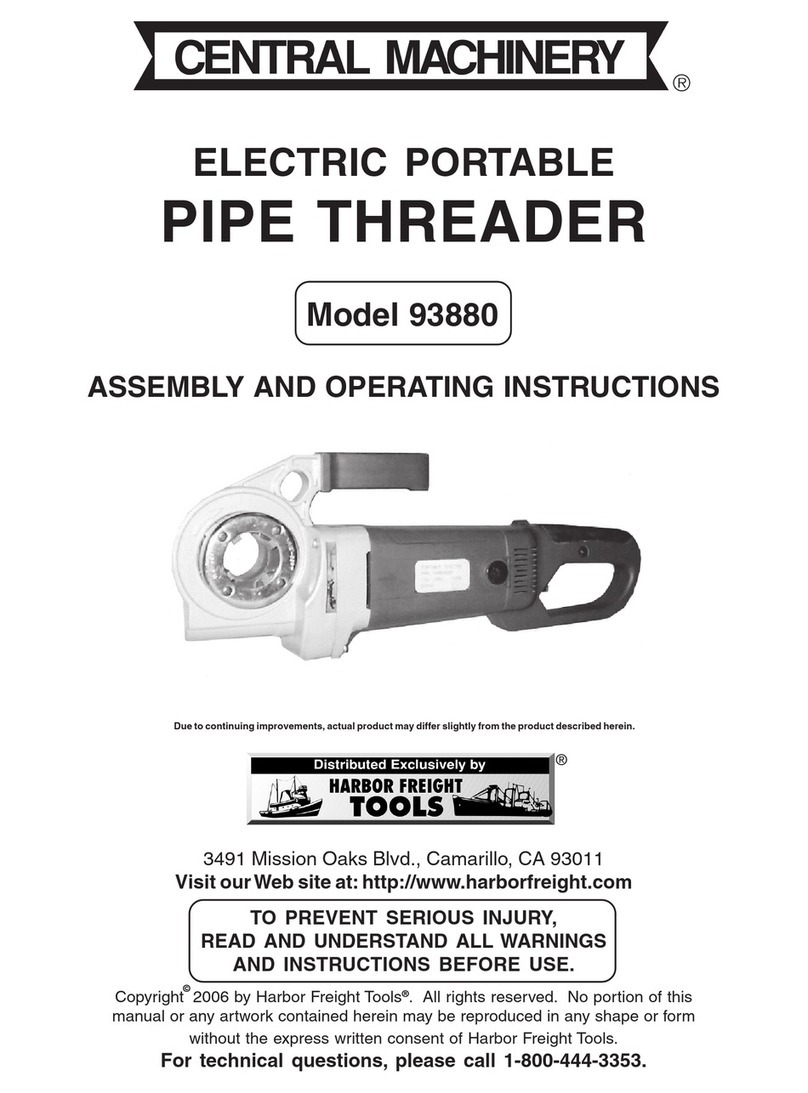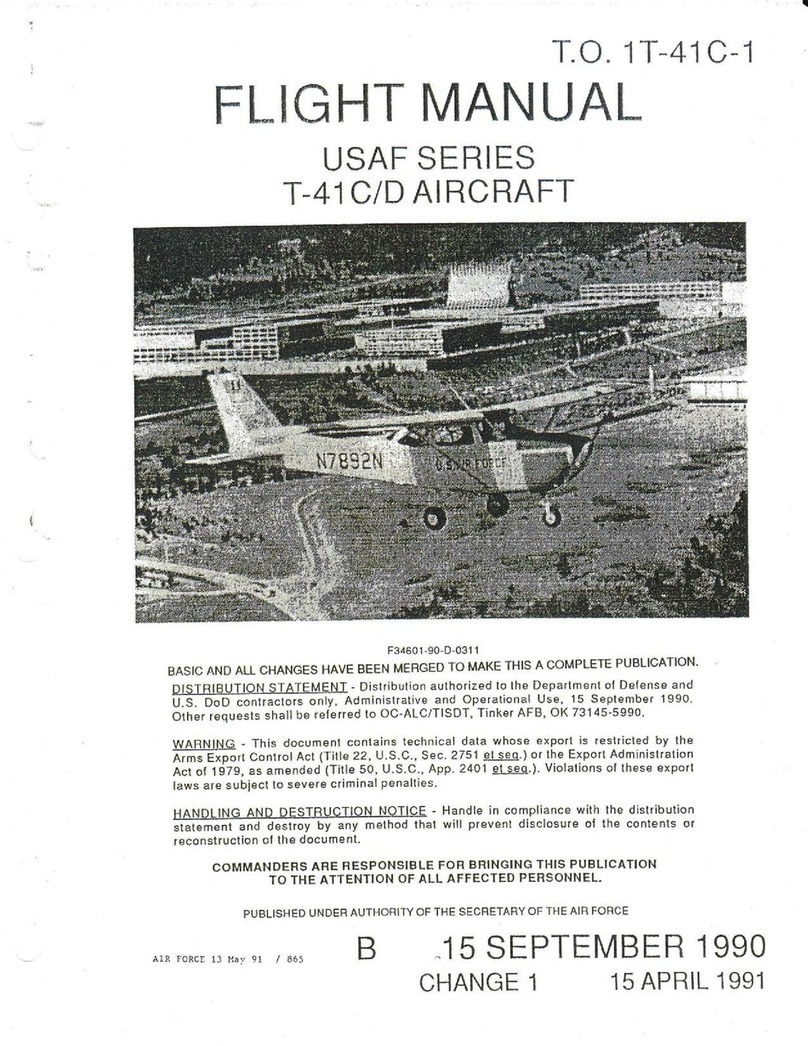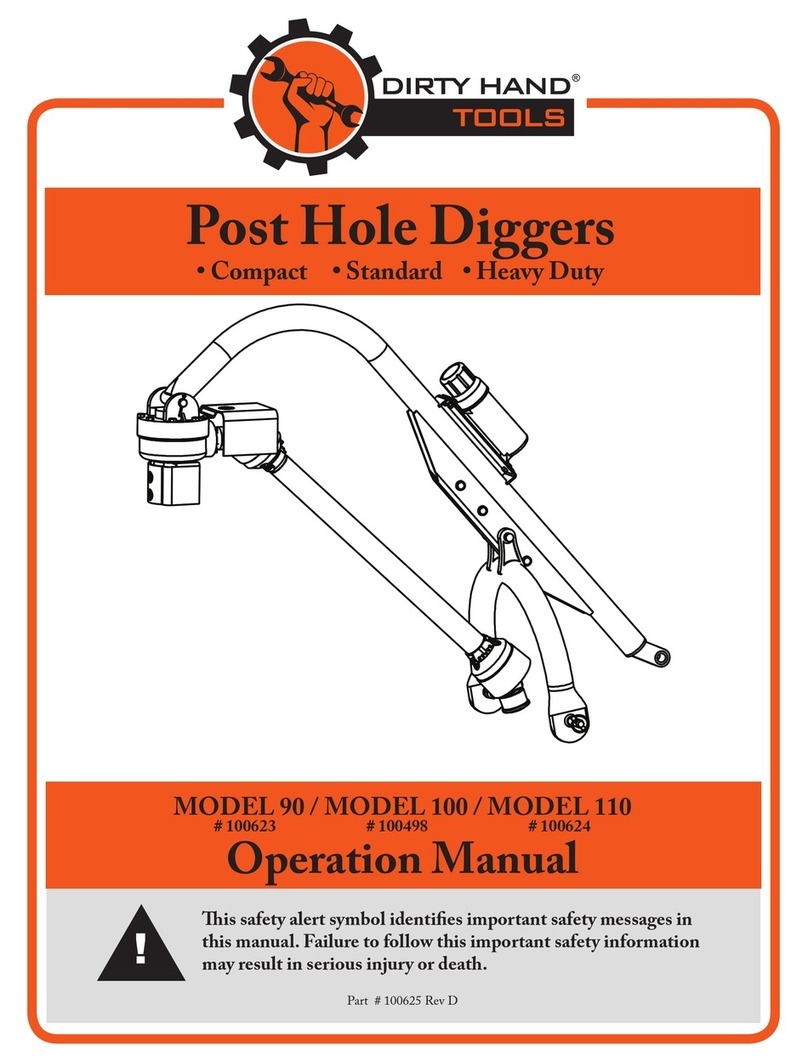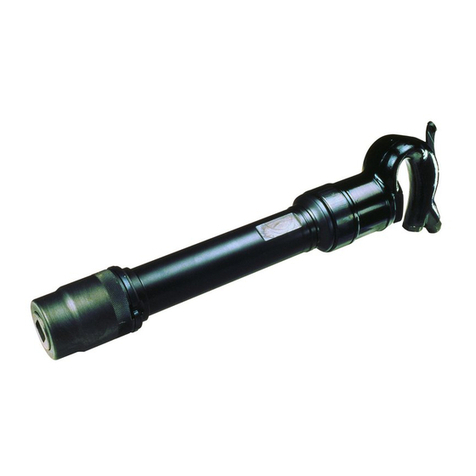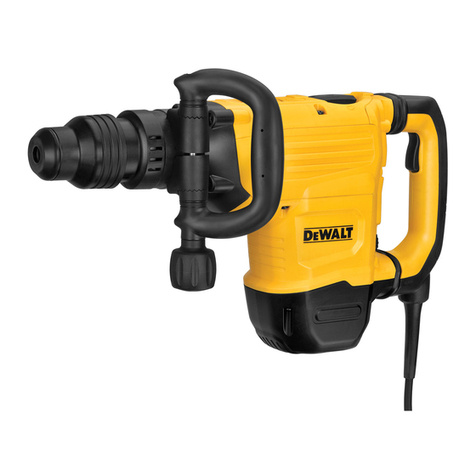Metal Arsenal ECCOTARP ET-ROLLER 5 User manual

ET-ROLLER 5
Electric roller for fire hoses up to 5"
INSTRUCTIONS FOR USE EN
T+420 737 802 153
T+420 777 472 640
www.eccotarp.com
Metal Arsenal s.r.o.
Owner of Eccotarp
trade mark
Poděbradova 1920
289 22 Lysá nad Labem
Czech Republic
Development
and
Production

This document„Instructions for use“ (hereinafter manual) is used to get acquainted with the
operation and characteristics of the ET-Roller 5 – Electric roller for re hoses up to 5" (hereinafter
the roller or the winder), and describes themannerof its use and possible risks connected
withitsuse.
It contains important information about how to use the device properly so as to avoid injuries
andincrease its reliability and extend its lifetime.
This document must always be available in the place where the winder is used. Keep it together
with the device at all times.
The operator is responsible for using the device safely and in compliance with the instructions
inthis manual, which applies to any third persons as well. If you have any doubts about operating
the winder, please contact the manufacturer or an authorized dealer.
OFF
REVERSE ON
1
SWITCH ON
2
PUSH RED BUTTON
TO WORK
2
1
B
A
Control panel
Handle position
locking pin
Removable carrier fork
with a handle
Built-in battery
Guiding coil
Charging cable socket
Locking pin to secure the position
of the stabilizing fold-out chassis
Stabilizing fold-out chassis
WORK button
Built-in control unit
and motor

The package includes:
1×ET-Roller 5 – Electric roller for
re hoses up to 5"
1×winder charger (36 V)
1×instructions for use
Technical data
Safety instructions for use
When using the winder, observe these instructions as well as all the safety notices herein.
1. The winder is only designed for winding and
unwinding re hoses and for squeezing remaining
water out of hoses.
2. The winder may only be operated by 1 person
(2persons in the event of unwinding).
3. The winder must be fully charged by the supplied
charger before it is used for the rst time. The battery
reaches full capacity only after several charging cycles.
4. Disconnect the winder from the charger before use.
5. During the winding process, the handle must be held
with both hands and the stabilizing fold-out chassis
must be secured byaleg.
6. !CAUTION! During winding, there is a risk of injury as
aresult of clothes or limbs being caught in the carrier.
7. Before the hose is taken away from the carrier, the
device must be turned o.
8. !CAUTION!The device is heavy.
9. Do not disassemble or modify the winder.
10. Never drop the device from a height.
11. Do not expose the device to temperatures over 40°C
for extended periods of time.
12. Protect the device from direct sunlight.
13. If the winder is excessively hot, allow it to cool down
and only start using it after that.
14. Never throw the device directly into re.
15. Never immerse the device in water or wash it with
water under pressure, and prevent water and
moisture from entering it directly.
16. Never attempt to charge a damaged winder.
17. In the event of injury resulting from improper
use of the winder take appropriate measures and
ifnecessary seek medical help.
18. The winder must not be handled or operated
bychildren.
19. The device must not be disposed of with household/
municipal waste. When the device is past its
lifetime, it must be taken to a waste collection
point for environment-friendly disposal or returned
tothemanufacturer.
20. The manufacturer conrms the product’s compliance
with EU directives.
Dimensions in use (w × d × h) 480 × 360 × 1080 mm
Dimensions of folded roller (w × d × h) 480 × 270 × 900 mm
Height of roller with handle at the maximum 1360 mm
Package dimensions 740 × 270 × 780 mm
Weight (without re hose) 23 kg (incl. Li-ion battery),
27 kg (incl. VRLA battery)
Types of re hoses that can be wound A, B, C, D, up to 5"
3

2
1
1. Insert the charger connector into the proper hole on the winder.
2. Insert the charger plug into a 230 V/50 Hz socket. The LED on the charger
lights up red. The winder is fully charged when the red indicator goes o
and the green indicator comeson.
The winder can wind about 4600 metres of wet A 110 type hose (230 times wound 20-metre hose) when the 36V
Li-ion battery is fully charged.
The winder can wind about 3500 metres of wet A 110 type hose (175 times wound 20-metre hose) when the 36V
VRLA battery is fully charged.
Specification of battery types
Illustrated charging instructions
Accumulator battery Li-Ion VRLA
Operating voltage 36 V DC 36 V (3×12V) DC
Safety instructions for charging
1. The winder is completely discharged when a slow
rhythmical sound signal is heard and the WORK
button goes o.
2. Use only the supplied charger type to charge
thewinder.
3. The range of permissible temperatures for charging
is between 0 °C and 40 °C. Outside this temperature
range the winder might be damaged or its lifetime
might be shortened.
4. No metal or other objects must be allowed to enter
the charger socket on the winder.
5. Never charge the winder in a wet
orhumidenvironment.
6. Never charge the winder near sources of heat or on
ammable surface.
7. Make sure that the mains voltage corresponds to the
voltage on the charger’s data plate. Otherwise there
is a risk of electrical injury.
8. The winder and the charger become warmer during
the process. This is normal and it is not regarded
asadefect.
9. Never cover the charger or the winder
duringcharging.
10. The winder is fully charged when the red indicator
goes o and the green indicator comes on.
11. If the winder is not charged within 5 hours, interrupt
the charging process. Begin charging again
in12hours. If the problem persists, please, contact
the manufacturer’s service department.
12. If an unusual smell, overheating, colour or shape
change or any other abnormalities occur during
winder charging/operation, stop the charging
process/operation immediately.
13. Never use a damaged charger. If it is damaged,
please, send it to the manufacturer for repair
orreplacement.
14. Never open the charger. If there is a defect, please,
contact the winder manufacturer.
15. Battery replacement – the device is supplied with
an original battery type 36 V VRLA or 36 V Li-ion.
Expected battery lifetime is 5 or more years if used
properly. If it is necessary to replace the battery,
itcan be replaced with a new one by opening the
lid of the device marked„battery“. Each new battery
issupplied with instructions for its replacement.
16. Safety warning: never open the control unit and
motor cover in the upper part of the winder.
Byopening the cover you lose warranty.
4

Preparation for winding:
1. The winder should be fully charged by the supplied charger before it is used.
Thewinder is designed so that it can be permanently connected to the charger
while stored. Use strictly the charger supplied by the manufacturer.
2. Disconnect the winder from the charger before use. Extend the handle into the
optimal position and transport the winder to the place of operation (winding).
3. Tilt and secure the stabilizing fold-out chassis: release the locking pin and turn it
by 90°. That prevents the winder position from being automatically re-locked. Tilt the fold-out chassis so that it is
stabilized and turn the locking pin back by 90° and let it slide into the locking hole.
4. Drain the water out from the hose. If, as a result of uneven surface, the hose is full of water or contains large rest
of water after reghting intervention, see“Squeezing remaining water out of a re hose” on p. 11.
LED is o – battery is fully charged
LED blinks in longer intervals – battery
ishalfdischarged
LED blinks in short intervals – battery is almost
completely discharged and must be charged
Winder battery charging indicator
Charging station specifications
Charging station 36 V
Mains voltage 88-264 VAC
Charging time 5 h
OFF
REVERSE ON
1
SWITCH ON
2
PUSH RED BUTTON
TO WORK
Instructions for Winder Operation
Please, read the safety instructions and this manual before using the winder.
The winder is designed for winding re hoses of sizes D to A (up to a diameter of 5“ and a maximum hose length
of50m). Thanks to its output it can also wind wet hoses (not lled with water). The winder can also be used for
squeezing remaining water out of re hoses (see “Squeezing remaining water out of a re hose”).
Hoses can be wound in two basic ways:
Winding with the winder stationary – STATIONARY method or while the operator walks – WALKING method.
Both methods make it possible to wind the hose from the centre to the end (option 1) or, thanks to the versatile
carrier, from the beginning to the end (option 2).
Although the operation is intuitive, recommended procedures for both alternatives are described below.
CLICK ON
PIN 90°
CLICK OFF
+ LOCK
PIN 90°
1 2
PULL OUT/
PUSH ON
1
5

5. Prepare the hose in the appropriate position according to how you
want to wind it for storage – see the instructions below (“option 1”
or“option2”).
5.1 Option 1: The hose can be folded in half and pulled by the folded
end towards the winder (see gure X). When folded, both parts
of the stretched hose must be put on each other and aligned
and the metal couplings must be positioned in such away that
the coupling of the upper half lies over the end of the lower half
of the hose. The rule for the overlap length is 0,5m of overlap per
each 10m of folded hose (e.g. with a 20-metre hose – 10-metre
after being folded – the upper coupling will overlap the lower
one by 0,5 m).
5.2 Option 2: Make the complete length of the hose straight.
AnAorB size hose will be reliably wound if the coupling is put
into the jaws of the carrier fork, which will hold the
protrusions on the ange (see gure Y). If thinner,
C or D size hoses, are to be wound, simply pass the
coupling through (seegure Z).
6. Pass the end of the hose or the end of its folded part under
the guiding coil.
7. Remove the removable fork from the carrier
and put the end or folded centre of the
straightened, aligned hose on it according to one
of the alternatives described in section 5 hereof.
8. Using a black plastic plate, adjust the width of the
guiding coil to the width of the hose by turning iton
the core of the coil.
9. Switch the winder to the ON position on the
controlpanel.
10. Then follow one of the ways below ( 2or 3)
2Hose winding STATIONARY METHOD
(winder stands and the hose approaches during winding)
1.
2.
2.1 Use both hands to get hold of the winder handles and press the locked tipping part of the stabilization
chassis to the ground in the lower position with your right foot. Turn the switch on the control panel
clockwise into the ON position. The control features will be illuminated in red and the winder is ready
foroperation.
2.2 Push the WORK button on the winder handle.
2.3 The winder starts winding the hose at a speed that gradually decreases so that the winding speed is
safe even with increasing diameter of the winding. Towards the end of the winding process, when the
couplings get close to the lower guiding coil, it is recommended that the hose should be wound in
CAUTION! During this procedure, the end of the hose, close to the coupling, which is moved on the surface,
may become chafen through. That is particularly risky in the case of hard surface, such as concrete, paving, etc.
Therefore, we recommend using a“hose protector“ (see optional accessories on page 12) for the free part of the
hose end.
Z
Y
X
Hose wound according
tog.X–seeoption1.
Hose wound according
tog.Y–seeoption2.
ADJUST
ADJUST
6

acontrolled manner by pressing the WORK button
intermittently until the couplings come safely close to
the guiding coil. After that the hose couplings must
be manually passed under the guiding coil (tilting the
winder to aside in the case of the largest hoses) and
with extreme care, the rest of the hose can be wound
by pressing the WORK button shortly. If the“hose
protector“ is used during winding, it must be removed
from the hose end before passing the hose under the
guiding coil so that the winder does not get damaged.
2.4 When winding is completed, turn the winder OFF.
2.5 Remove the wound hose with the removable part
ofthe carrier from the winder and put it away for
further handling. Remove the removable part of the
carrier from the centre and put it back on the carrier. The hose is now ready to be stored or used.
2.6 When you have nished working with the winder, connect it to the charger so that it is available with its
battery fully charged at all times. After the battery is completely charged, the charger is automatically
turned into standby mode, which prevents the battery from self-discharge.
3Hose winding WALKING METHOD
(the user walks forward with the winder and the hose is stationary on the ground
whilebeing wound)
3.
3.1 Tilt and secure the stabilizing fold-out chassis: Release
the locking pin by hand, turn it 90° to prevent itfrom
engaging automatically again and locking the
position. Tilt the chassis into the transport position
and secure it by turning the pin 90° and letting it slide
into the lockinghole.
3.2 Turn the switch on the control panel clockwise
into the ON position. The control features will be
illuminated in red. Press the illuminated WORK button
in the middle of the handle and start walking with the
winder immediately towards the free end of the hose.
Adapt your walking speed to thewindingspeed.
3.3 The winder starts winding the hose at a speed that
gradually decreases so that the winding speed is safe
even with increasing diameter of the winding.
Towards the end of the winding process, when the
Note: The WORK button can be released at any
time during operation in order to stop winding.
Afteritis pushed again, the winder continues
working with the lower revs which it had when it
was stopped(see Graph 1).
If you need to protect the hose against damage during winding without using the“hose protector“, it can be
wound when the user is walking forward with the winder and winding thelying hose.
or
or
Hose protector
– see p. 12
7

CLICK ON
PIN 90°
CLICK OFF
+ LOCK
PIN 90°
PULL OUT/
PUSH ON
1 2
A
B
B
A
PULL
OUT
3
A4
B
A
C
ADJUST
5
Y
X
Z
PUSHSWITCH
ON
A B
6
OFF
ON
7
Illustrated instructions for winder operation
couplings get close to the lower guiding coil, itisrecommended that the hose should be wound
inacontrolled manner by pressing the WORK button intermittently until the couplings come safely close
to the guiding coil. After that the hose couplings must be manually passed under the guiding coil (tilting
the winder to a side in the case of the largest hoses) and with extreme care, the rest of the hose can be
wound by pressing the WORK button shortly.
If the“hose protector“ is used during winding, it must be removed from the hose end before passing the
hose under the guiding coil so that the winder does not get damaged.
Note: The WORK button can be released at any time during operation in order to stop winding.
Afterit is pushed again, the winder continues working with the lower revs which it used when it was
stopped(see Graph 1).
3.4 When winding is completed, turn the winder OFF and tilt the stabilizing fold-out chassis so as to secure
the winder while removing the hose from the carrier.
3.5 Remove the wound hose with the removable part of the carrier from the winder and put it away for
further handling. Remove the removable part of the carrier from the centre and put it back on the carrier.
The hose is now ready to be stored or used.
3.6 When you have nished working with the winder, connect it to the charger so that it is available with its
battery fully charged at all times. After the battery is completely charged, the charger is automatically
turned into standby mode, which prevents the battery from self-discharge.
Tilting and securing
thestabilizing fold-out chassis
Placing hose into
hose carrier
Manners of securing
hose in carrier
Winder activation Removing carrier fork
from wound hose
ADJUST
Z
Y
X
8

SAFETY FUNCTIONS OF THE WINDER
Certain safety features influence some of the winder’s reactions during
the work:
1. Stopping the winding – If the motor
becomes overloaded unexpectedly
(e.g. as a result of the hose being
obstructed or stepped on), the
winding process is interrupted
immediately, the WORK button
starts blinking and a fast sound
signal is heard. If you only release
the winder’s WORK button (without
turning the main switch to the
SWITCH OFF position), then, after
the cause of motor overloading is
removed and WORK is pushed again,
the winder continues working with
the revs which it used at the time
of being stopped (seeGraph1).
However, in this case of forced
interruption, the controlling software
needs a few seconds before it can
resume the winding process.
2. Motor overheating – The system
has a safety feature that prevents
overheating. If the motor becomes
excessively hot (e.g. during work
under extreme temperatures), the
battery is automatically disconnected.
The reason is battery safety. Place
the machine out of reach of the heat
source (e.g. in shade). Themachine
can be turned on again after
itcoolsdown.
3. The OFF-ON switch and the WORK button – The winder is tted with a smart revs control feature for
your convenience and safety. Every time the OFF-ON switch is used, the“Winding”program is activated
(seeGraph1and 2). It shows the course of the carrier’s revolving speed. That happens so that the winding
revs are fast with a small spool diameter and the winding speed remains approximately the same and safe
while the diameter becomes larger. When winding is stopped – the WORK button is released – the winding
program is interrupted. When WORK is pressed again, the winding speed returns to the previous speed in a few
seconds(seeGraph 1).
4. Interrupting the winding process by using the OFF-ON button – It is clear from the description above that if
the winding process is interrupted and the OFF-ON button is used, the winding function starts again at the
beginning. That means that if the winding process is interrupted and the winder is turned OFF and then ON
again, the highest revolution speed is activated by pressing the WORK button (see Graph 2). In spite of that it is
still possible to work safely: you can control the revs by pressing WORK repeatedly.
Winding speed Graph 1
OFF–ON –
pressing of WORK
Interruption –
pressing of WORK
Time
Winding speed
OFF–ON –
pressing of WORK
Interruption – ON–OFF –
obstacle removed OFF–ON –
pressing of WORK
Time
Graph 2
9

Smart winding
Your winder has a smart motor control which allows you to adjust the re hose winding speed. The reason is your
convenience and safety as well as battery protection.
1. How does it work? After WORK is pressed, the motor begins winding at zero speed. Then it switches to the
highest revs very quickly and while the hose is gradually being wound, it starts lowering the revs so that with the
increasing diameter of the wound hose, the winding speed for the free end of the hoseremains safe.
2. Release the WORK before completing the winding process and by pressing it intermittently you will achieve the
lowest safe winding speed (see Graph 1).
3. Overloading – if the hose gets stuck or stepped on, or for other reasons, the winding force may become
excessively high. In such a case, the system automatically disconnects the battery and warns the user by a fast
warning sound and by the WORK button blinking. After the WORK button is released and the obstacle removed,
the machine is ready to be used again in a few seconds.
4. Overheating – the machine has a recommended working temperature range. When the highest safe
temperature (60 °C) is exceeded, the battery is automatically disconnected from the machine. The reason
isbattery protection against overheating. After cooling down, the machine is ready to be used again.
5. Battery discharged – if battery capacity decreases under the safety limit, the battery is disconnected from
the device, a slow warning signal is heard and the WORK button’s light indicator goes o. The reason is
battery protection against destruction. After the battery is recharged, the machine is ready to be used
again. Themachine comes with the original charger, which can fully recharge the battery in about 5 hours.
Themachine is designed in such a way that the charger can be connected to the winder permanently (charging
is automatically stopped when the battery is fully charged).
REVERSE function
By turning on the REVERSE function on the control panel and pressing the WORK button, the reverse run of the
carrier is activated. This function is mainly used for controlled unwinding of an already wound re hose. Two persons
are needed for this function to be used. One person controls the winder (switching on REVERSE and pressing WORK)
while the other person grips the metal couplings of the wound hose and moves away from the winder in accordance
with the winder revs. When this function is used (both with the unwinding interrupted and uninterrupted), the re
hose is unwound at high speed all the time (see Graph below). Therefore, it is necessary to be extremely careful.
Unwinding speed
OFF–REVERSE –
pressing
of WORK button
Interruption –
pressing
of WORK button
Time
10

Squeezing remaining water out of a fire hose
1. The winder must be turned o – the OFF position on the control panel.
2. Pass one end of the hose over the lower guiding coil so that you can step on this hose end.
3. If the stabilizing fold-out chassis is tilted out, tilt it down so that the winder can stand on it without
beingsupported.
4. Tilt the winder towards yourself and proceed slowly with the discharging (downhill, if possible) so that the hose
is rolled over the coil, which pushes the water in the hose forward, towards the other end, where the water ows
out of the hose. The process of stretching the hose over the coil and of the water owing out can be intensied
by walking on the hose throughout the process.
5. Make sure that no objects that might prevent the water from owing out lie on the hose during the process.
6. After the water discharging process is nished, the hose can be placed on the removable carrier fork and wound
into shape for storage as described in the“Instructions for winder operation”chapter.
11

228
220
352,1
160
Instructions for winder charging and storing
1. Store the winder in a dry place.
2. If the winder is not to be used for a long time, it should be stored at room temperature (19–23 °C).
3. The winder system is designed in such a way that the charger can be connected to it permanently and the
battery is safely recharged without any risk of damage. As a result, the charger can be connected during
storageas well.
4. When the winder is completely discharged, the system is automatically disconnected from the battery so that
the battery is not completely destroyed. Therefore the battery must be recharged as soon as possible.
5. If stored for a long time without the charger connected to it, the battery must be fully recharged once a year
soas to prevent it from being totally discharged.
Recommended optional accessories
Hose protector Material Dimensions (w × l × h)
for hoses of up to size A 110 (5") stainless steel 228×352×160 mm
We recommend
storing the hose
protector hung
onthe winder
carrier fork.
1
2
3 4
or
12

Important contact information
Manufacturer and qualied service:
Metal Arsenal s.r.o.
Poděbradova 1920
289 22 Lysá nad Labem
Czech Republic
info@eccotarp.com
T: +420 737 802 153
Repair
Any repair work must always be done by the manufacturer’s qualied personnel. In order to report any faults, spare
parts orders or complaints, please contact only our qualied service department.
Warranty conditions
The warranty period is stated in the warranty certicate, which is delivered with the product. The warranty period is
24 months and begins on the day indicated in the warranty certicate. The warranty does not apply to the normal
wear and tear (e.g. gradual decrease in battery capacity) or to damage caused by improper use or non-compliance
with the information provided in these Instructions for Use.
Disposing of a damaged device or its parts
The device or its parts must not be disposed of with household/municipal waste. At the end of its lifetime, the
device must be taken to a waste collection point for environment-friendly disposal or returned to the manufacturer.
Acharger, that is past service, must be taken to an electric waste collection point or returned to the manufacturer.
EU DECLARATION OF CONFORMITY No. 01032020/M
Metal Arsenal s.r.o., Poděbradova 1920, 289 22 Lysá nad Labem, Czech Republic, hereby declares, at its sole liability,
that the following product
ET-ROLLER 5
Electric roller for fire hoses up to 5"
(A winder intended for winding re hoses with couples of the maximum size of A110 (5") and maximum length
of50m. It includes a 36V DC Li-ion or VRLA battery and a 100–240V AC charger.)
complies with applicable harmonized standards of the European Union.
The above is veried according to Government regulations no. 118/2016 Sb., which is equivalent to a Council
Directive 2014/35/EU Government Regulation no. 117/2016 Sb., which is equivalent to a Council Directive 2014/30/
EU, ČSN EN 60335-1 ed. 2, ČSN EN 61000-6-3 ed. 2, ČSN EN 55014-1 ed. 4.
13

Notes
14

Pictograph meanings
Observe the Instructions
for use for ET-Roller 5.
During the winding process, the
handle must be held with both
hands and the stabilizing fold-out
chassis must be secured by a leg.
!CAUTION! During winding,
there is a risk of serious injury as
a result of clothes or limbs being
caught in the carrier.
Do not wash the
machine with water
under pressure.

1 person only
1. 2.
OFF
!CAUTION! Indicates imminent
danger. Not observing this
warning may cause death
orserious injury.
Before using the winder, read all the safety warnings in this manual. The illustrations in this manual may not fully
correspond to the supplied product. Their purpose is to help you understand the text better. The content of this
manual may be changed without prior notice.
Conrmation of the
machine’s compliance
with EUregulations.
The winder may only be
operated by 1 person.
Before the hose is taken
away from the carrier, the
device must be turnedo.
Protect the device from direct
sunlight and do not expose it to
temperatures higher than 40 °C
for extended periods of time.
Table of contents
